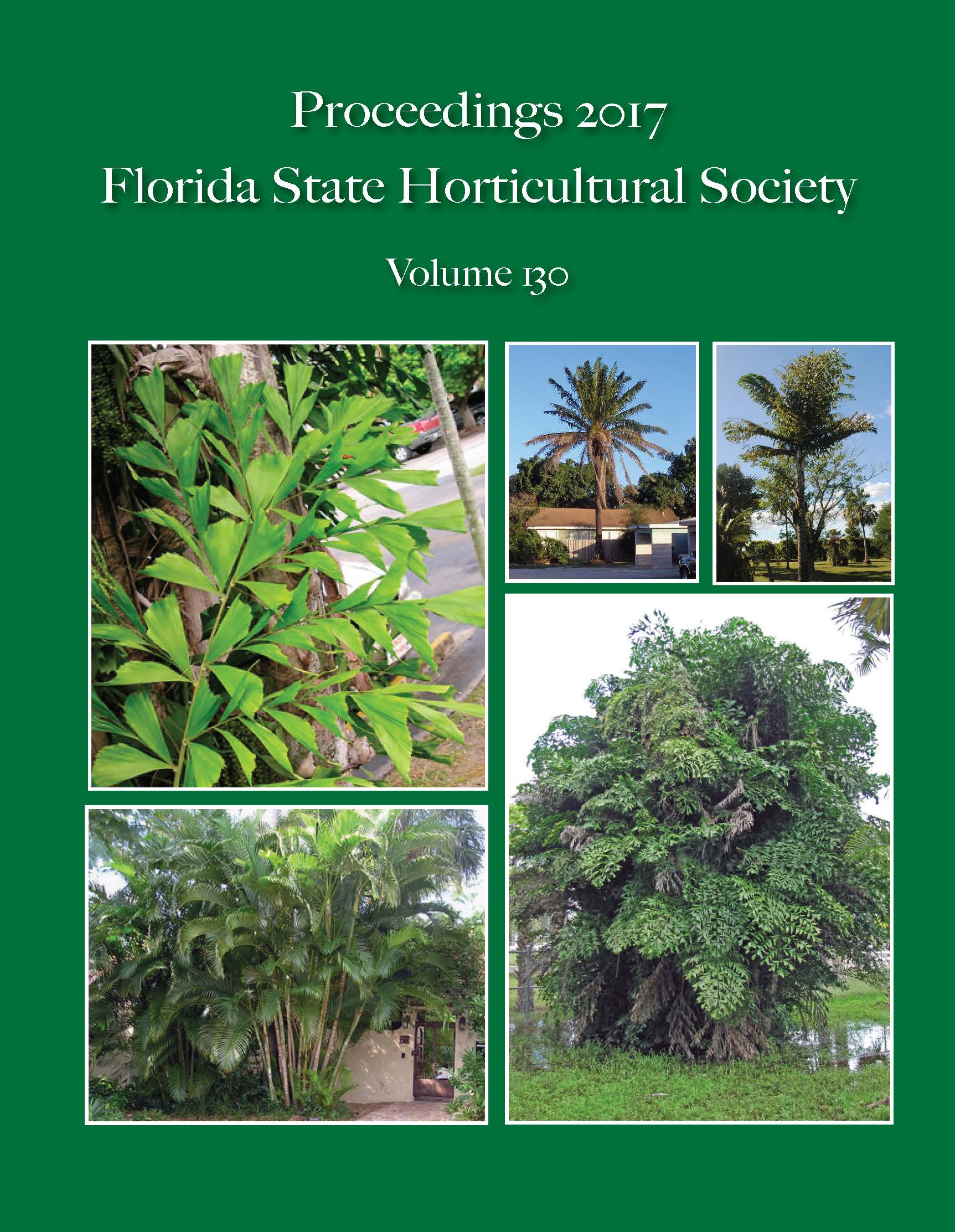Foliar Spray of Gibberellic Acid Improves the Onset of Bud Break and Fruit Set of Blackberries in Florida
Abstract
Most blackberry (Rubus subgenus Rubus Watson) cultivars are adapted to temperate climates, requiring 300 to 900 hours of temperatures below 7 °C to induce flower bud break. To achieve high blackberry yields under the subtropical climate in Florida, bud break must be artificially induced. A field experiment was conducted in the 2015–16 season to evaluate the effects of gibberellic acid (GA3) on bud break and fruit set of two blackberry cultivars, ‘Natchez’ and ‘Ouachita’. Both cultivars were established in Balm, FL, in 2013. Plants were sprayed with GA3 at 0 or 49 g·ha-1 on 24 Dec. 2015. Cumulative chilling hours below 7 °C during the growing season were 139 hours. Application of GA3 advanced the onset of bud break by 70 days for ‘Natchez’ (9 Mar. 2016 to 30 Dec. 2015) and 76 days for ‘Ouachita’ (15 Mar. 2016 to 30 Dec. 2015). Application of GA3 also increased fruit set by 53% for ‘Natchez’ (60 vs. 91 berries/plant) and 180% for ‘Ouachita’ (15 vs. 42 berries/plant). Although the improved fruit set by GA3 decreased the average berry weight by 9% for ‘Natchez’ (6.43 vs. 5.87 g) and 23% for ‘Ouachita’ (4.19 vs. 3.24 g), it increased marketable yield by 38% for ‘Natchez’ (3.36 vs. 4.62 t·ha-1) and 115% for ‘Ouachita’ (0.54 vs. 1.16 t·ha-1).These results suggest that GA3 is highly effective in improving the onset of bud break and fruit set of blackberries. This strategy may improve the adaptability of blackberry cultivars with high chilling requirements to Florida.

